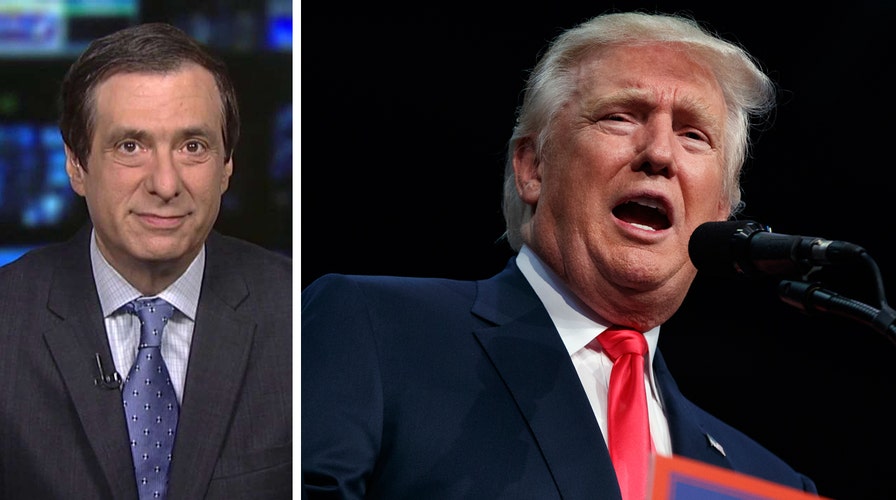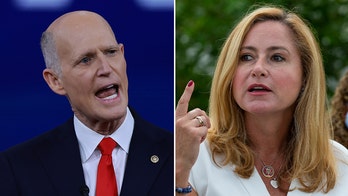Kurtz: Press awash in Anti-Trump polls
'MediaBuzz' host Howard Kurtz reacts to media putting stock in polls that indicate Trump is falling behind when there are still a number of months until the election
Donald Trump actually revealed some good news yesterday, but it was dwarfed by the tidal wave of negative punditry.
Even as a Daily Beast piece declared that “the race between Donald Trump and Hillary Clinton is all but over,” the Republican nominee and his party raised $82 million last month, barely trailing Clinton’s $90 million. This is a dramatic improvement from the spring, when the Trump team was practically out of cash.
But the media remain laser-focused on Trump’s troubles, and some of that is driven by polling.
When a candidate says or does something damaging, journalists are quick to check the next polls. If there’s not much change, we say it hasn’t hurt him. If he takes a hit in the numbers, we often go into hair-on-fire mode.
There are two problems with this approach. One, polls are ephemeral. They blip up and down. A convention bounce soon fades. Trump was nowhere in the polls when he launched his campaign and somehow managed to win the Republican nomination. So those who are writing his political obituary are being short-sighted.
Second, it’s a self-fulfilling prophecy. Given the hammering that Trump has taken over the last week—whether it’s deserved or not—it would be shocking if he wasn’t dropping in the polls.
The latest Fox News poll has Clinton leading Trump by 49 to 39 percent. An NBC/Wall Street Journal poll released last night gives Clinton a 9-point edge, and a McClatchy survey puts the lead at a whopping 15 points.
Of course, a Reuters survey out yesterday gives Clinton a 4-point lead, and an L.A. Times poll has her ahead by just 1 point. NBC, on Tuesday, had the Democratic nominee with an 8-point edge. I don’t doubt that Hillary has a significant lead, but the picture is a bit muddled.
More important, of course, are the swing state polls. It’s increasingly clear that Trump has a narrow path to the presidency; the same would be true of any Republican candidate. A generic Democratic nominee goes into the election pretty much assured of 242 electoral votes, simply by holding the 19 states (plus D.C.) that have gone blue in every presidential race since 1992.
That means Trump has to win a bunch of crucial swing states, including Florida and Ohio, to get to 270.
It looked until recently that Trump might actually be able to put Pennsylvania into play. But a Franklin & Marshall poll this week has Clinton leading, 49 to 38 percent.
New Hampshire is sometimes a swing state, but a WBUR survey has Trump trailing, 51 to 34 percent.
A Suffolk poll shows Clinton ahead in Florida, 48 to 42 percent.
These state surveys are also more important because the candidates are starting to make decisions about where to invest advertising dollars and staff resources, and have to write off battlegrounds where they have little chance of winning.
Nate Silver was wrong about Trump in the primaries, but he now gives Clinton a 78.4 percent chance of winning in November. His 538 site also says that down-ballot Republicans may have to separate themselves from Trump to survive:
“Republicans in most Senate battlegrounds are running ahead of Trump in their states. That may last, increasing the chances that the GOP hangs on to their Senate majority. But it’s also possible that Trump begins to drag down his party’s down-ballot candidates.” The Democrats need just four seats to win Senate control if Clinton captures the White House.
Still, it’s time for the poll-obsessed press to take a deep breath. The polls are not good for Donald Trump right now. But it’s the beginning of August.





